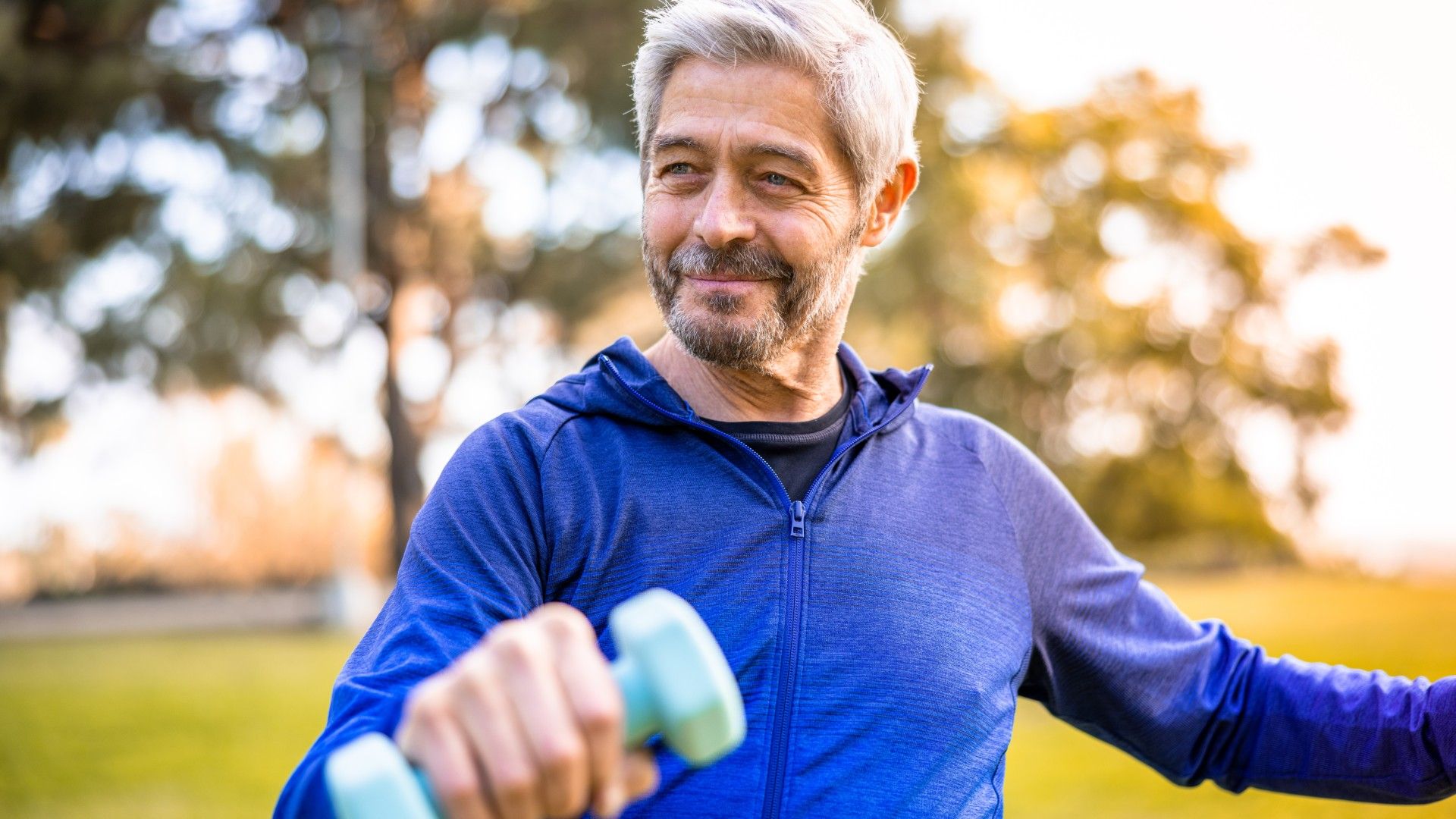Copyright tomsguide

I never thought I’d see the day my dad thanked me for adding dumbbell split squats into his life, but there we go — it happened. I recently asked him what he believes is the best anti-aging exercise I taught him, and I was genuinely surprised when he said weighted lunges (we perform these with the feet static, so technically, they’re split squats). By anti-aging, I mean functional exercises that make his daily activities easier to achieve. He credits them with keeping him balanced and stable, which reduces the likelihood of falls and injuries as he gets older. My dad doesn’t look or move like he’s in his seventies; he deadlifts 100kg, for example. But he is getting older, so I have to think about this when I add strength exercises to his weightlifting routine. Regardless of age, there are plenty of benefits to split squats as a lower-body exercise that builds strength in the hips, glutes and legs. Here’s how and why I use them. What are split squats? Split squats, confusingly, are actually lunges. The difference is that you don’t step with every rep; instead, you keep your feet in the lunge position and just focus on the lunging — bending and extending your knees. It can be lower-impact for the knees than walking lunges or front lunges, but it still doesn’t suit everyone, so if you experience pain while trying split squats, stop immediately and seek advice from a medical professional or your personal trainer, who can give you lunge alternatives. How to do split squats You can get better depth using dumbbells over kettlebells, but you could also use a barbell. You can also play around with how you hold the weights, either single or dual loading, holding them by your sides, to your chest, or racked at the shoulders. Start with your feet hip-width apart, holding your weightsStep your right foot back into the lunge position, ensuring your feet are on train tracks rather than a tightropeBend your knees and lower toward the ground, tapping the back knee lightly to the floor for a full range of motionDrive up to stand through your legs, extending the knees and hips as you press through your front legContinue for 8-12 reps, then switch legs straightawayAim for 3-4 sets. I also teach a slight forward lean, which means hinging forward at the hips. It shouldn’t be excessive, and try to avoid rounding your back, but the goal is to engage more of the glutes, which I find clients unknowingly neglect. Strong glutes help protect your pelvis and spine, and tight or weak glutes often contribute to lower back pain and injuries, especially in sedentary or older adults. What are the benefits? Split squats test your balance and stability, and improve both. When I first started training my dad, his balance was terrible, and we had to build up slowly to weighted split squats, but the variation is easier to control than regular lunges, as you can keep your feet where they are. He found this more helpful than forcing the standard lunge, but now, he can do both comfortably. My dad also finds it easier to hold dumbbells by his sides, as this helps him to balance better. Over time, his legs and glutes have gotten stronger, and he finds other activities easier to do. That’s the beauty of functional training — the strength and stability you build translates over to other areas of life, like playing with the grandkids or climbing a staircase. Split squats also stretch the hip flexor muscles that run along the fronts of your hips; tight or weak hip flexors contribute toward injury and lower-body stiffness, so this is a bonus. If you want to benefit from more core engagement, try racking the weights onto your shoulders. To test grip strength, stick to dumbbells or kettlebells for heavier loads, but to load maximally, consider using a barbell instead. Follow Tom's Guide on Google News and add us as a preferred source to get our up-to-date news, analysis, and reviews in your feeds. Make sure to click the Follow button! More from Tom's Guide Strength vs hypertrophy: what's the difference?Less stretching, more mobility: 3 simple chair exercises for people over 60s (that don’t involve sitting)The 5 best ways to build muscle without lifting heavier weights



